[Newsbits] 3-5.02.2024: Magh Bihu, Candida Auris, Widow Year & more

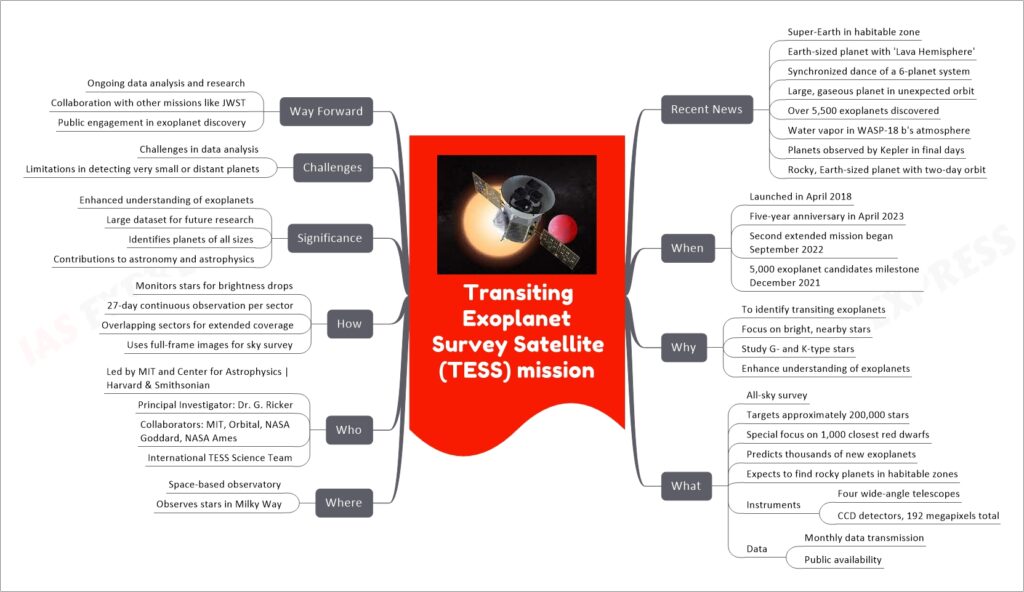
The Transiting Exoplanet Survey Satellite (TESS) mission, an initiative led by NASA in collaboration with MIT and other organizations, is focused on discovering new exoplanets. Launched in April 2018, TESS employs an all-sky survey method, targeting approximately 200,000 bright, nearby stars, including 1,000 closest red dwarfs. The mission aims to find transiting exoplanets around these stars, focusing particularly on G- and K-type stars. Using four wide-angle telescopes and CCD detectors, TESS monitors these stars for temporary drops in brightness caused by planetary transits. Over its course, TESS has made significant discoveries, including over 5,500 exoplanets, some in habitable zones, and others exhibiting unique characteristics like ‘Lava Hemispheres’. The mission has also celebrated milestones like its fifth anniversary and the commencement of its second extended mission. TESS’s contributions are vital in understanding the diversity and nature of exoplanetary systems, enhancing our knowledge of the universe.
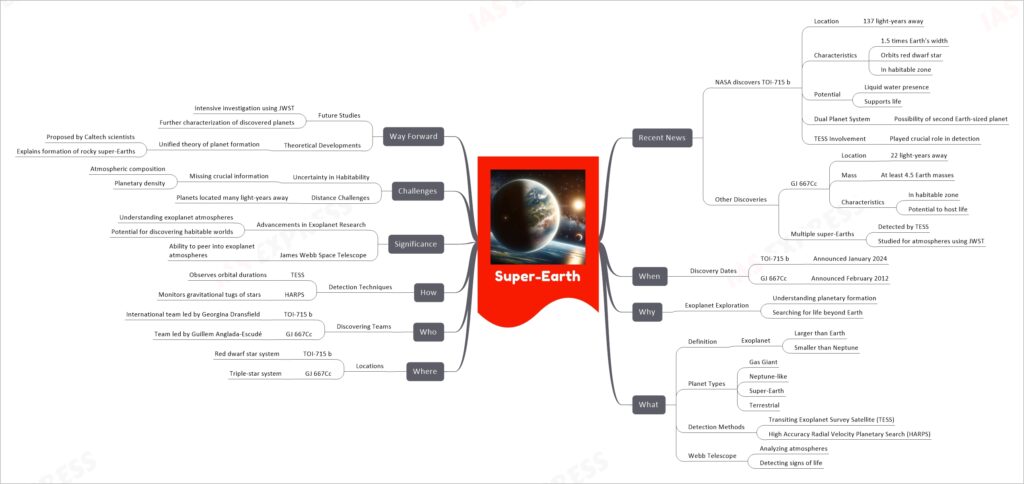
Super-Earths are a category of exoplanets larger than Earth but smaller than Neptune, with recent discoveries including TOI-715 b and GJ 667Cc. These planets are particularly interesting due to their potential habitability, with characteristics like being in the habitable zone of their star systems and possibly hosting liquid water. Their discovery and study, conducted by international teams using telescopes like TESS and HARPS, contribute significantly to our understanding of exoplanet atmospheres and the conditions for life beyond Earth. Future investigations, especially using the James Webb Space Telescope, are expected to provide more insights into these intriguing celestial bodies.
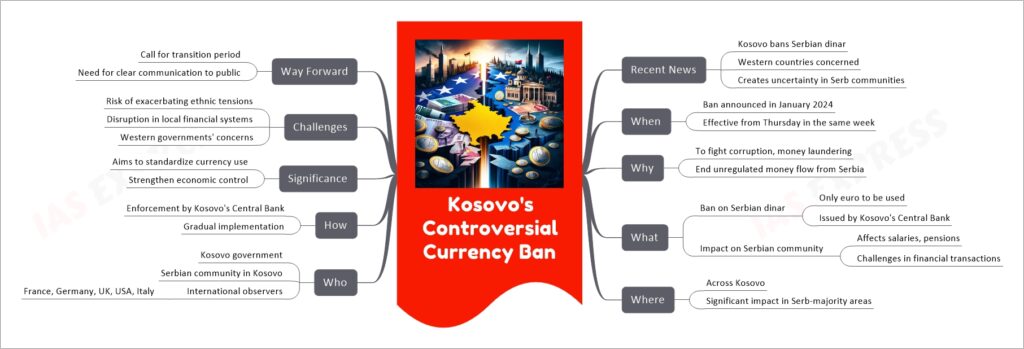
To summarize, Kosovo’s decision to ban the Serbian dinar, primarily aimed at fighting corruption and money laundering, has sparked a potential new crisis. The ban affects the Serbian minority in Kosovo, who have relied on the dinar for financial transactions like salaries and pensions. This move has been met with concern from Western countries and has led to uncertainty, especially in Serb-majority areas. While aiming to unify currency use and strengthen economic control within Kosovo, the ban risks exacerbating ethnic tensions and disrupting local financial systems.

The “Widow Year” is a concept from Chinese culture, referring to certain years in the lunar calendar that lack the solar term “Spring Commences” or ‘lichun’. This absence is traditionally thought to signify a lack of masculine (yang) energy, making such years inauspicious for marriage due to the superstition that it could lead to the husband’s early demise. The Chinese lunisolar calendar, which combines lunar months and solar terms, occasionally necessitates the addition of leap months to maintain alignment, resulting in some years having two instances of Spring Commences and others having none. Despite these beliefs, modern attitudes in Chinese society show a diminishing adherence to this superstition, with many choosing personal preference over tradition. Interestingly, years like the Year of the Dragon, often coinciding with a Widow Year, are seen as auspicious for childbirth.
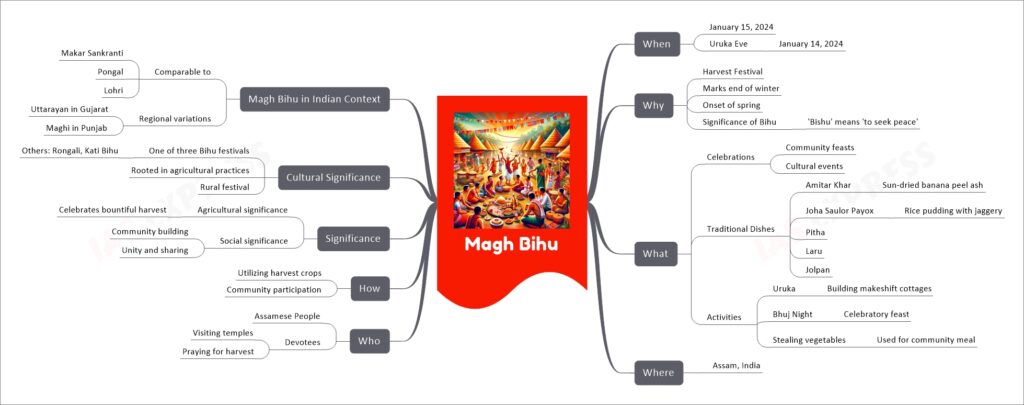
Magh Bihu, celebrated on January 15, 2024, is a vibrant harvest festival in Assam, India, marking the end of winter and the onset of spring. Known for its social and agricultural significance, it’s a time for the Assamese community to express gratitude for a bountiful harvest. Celebrations include communal feasts, cultural events, and preparing traditional Assamese dishes like Amitar Khar and Joha Saulor Payox. Magh Bihu fosters a sense of unity and sharing, embodying the spirit of ‘Bishu’ – seeking peace and indulging in community-building.
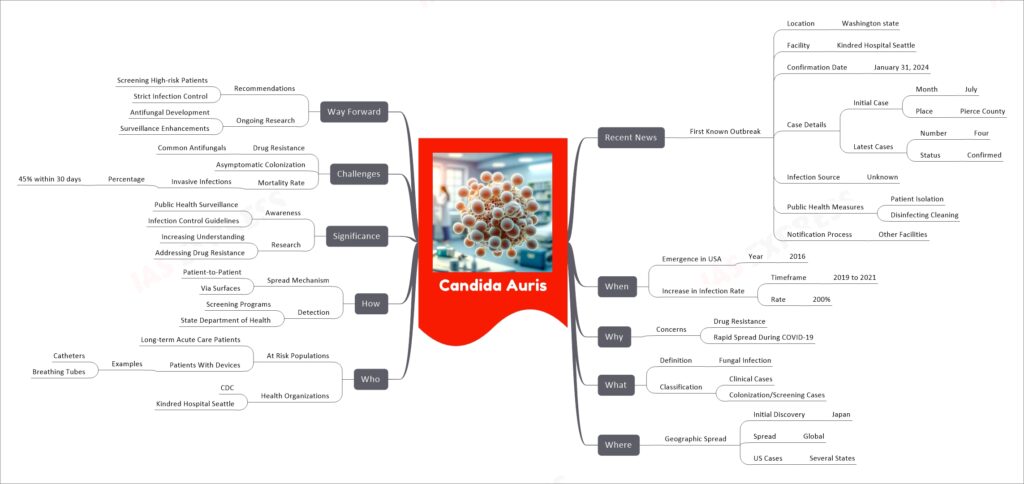
Candida Auris is a significant public health concern due to its resistance to common antifungal medications and its ability to spread rapidly, especially in healthcare settings. It first emerged in the United States in 2016 and has since seen a significant increase in infection rates. The fungus can spread through patient-to-patient contact and contaminated surfaces. Particularly concerning is the fungus’s ability to colonize patients without causing symptoms, which can lead to invasive infections with a high mortality rate. Public health efforts focus on surveillance, strict infection control measures, and ongoing research to address drug resistance and improve detection methods.
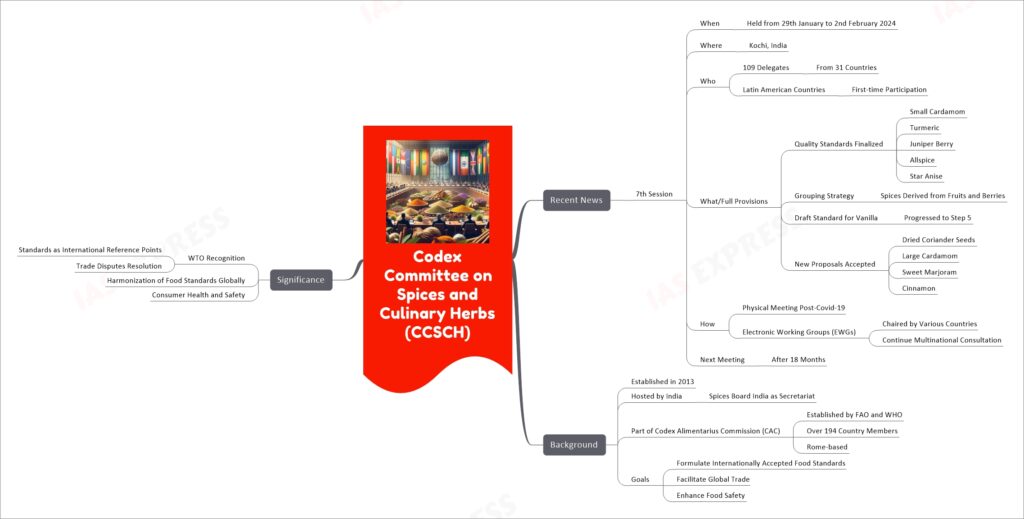
The Codex Committee on Spices and Culinary Herbs (CCSCH), a segment of the Codex Alimentarius Commission established by the FAO and WHO, recently concluded its 7th session in Kochi, India. This session, the first physical meeting post-Covid-19, was attended by 109 delegates from 31 countries, including a significant first-time participation from Latin American countries. The committee achieved notable results by finalizing quality standards for five spices—small cardamom, turmeric, juniper berry, allspice, and star anise—and adopting a novel strategy of grouping spices, starting with those derived from fruits and berries. Proposals for developing standards for dried coriander seeds, large cardamom, sweet marjoram, and cinnamon were also accepted. CCSCH’s work is crucial for formulating internationally accepted food standards, enhancing global food safety, and facilitating fair trade, with its standards recognized by the WTO as reference points for resolving trade disputes.

The Traffic Index Ranking for 2023 published TomTom (dutch tech company) provides a comprehensive analysis of traffic congestion in cities worldwide, involving 387 cities across 55 countries on 6 continents. This index is a vital tool for urban planners, policymakers, and drivers, offering insights into various factors such as average travel times, fuel costs, and the impact of congestion on cities’ transportation infrastructure and economy.
Notable findings from the 2023 Traffic Index include cities like Dublin, London, and Bengaluru experiencing significant time delays due to traffic congestion. For instance, in Dublin, a motorist spends on average 1 hour and 14 minutes for a typical 6-mile journey during peak hours, losing over 40 minutes due to traffic. Similarly, London’s road infrastructure contributes to it being one of the cities where motorists lose the most time due to congestion, with a 6-mile journey taking 12 minutes and 5 seconds longer on average than the optimal journey time.
The index also highlights the economic costs of congestion, including increased fuel costs and the value of lost time. These aspects are crucial for urban planning and traffic management, as they directly impact the quality of life and economic efficiency in urban areas.
Real-time traffic data from the index is used to feed algorithms for managing traffic jams, optimizing road logistics, and routes. Such measures can potentially reduce commuting times in cities by 15-20%. The data is also used for intelligent traffic light synchronization and providing real-time route information to drivers.
Overall, the Traffic Index Ranking 2023 underlines the importance of efficient traffic management and the need for innovative solutions to address the challenges of urban congestion.
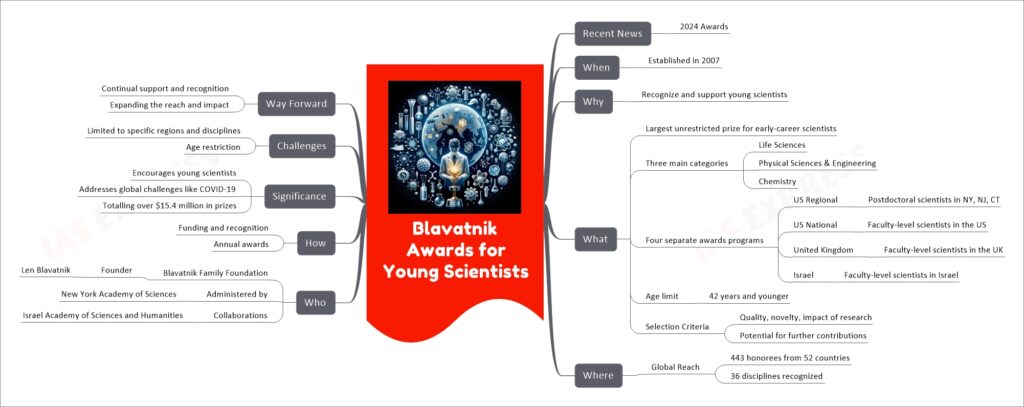
The Blavatnik Awards for Young Scientists, established in 2007 by the Blavatnik Family Foundation and administered by the New York Academy of Sciences, are prestigious awards aimed at recognizing and encouraging young scientists and engineers under 42 years of age. They focus on three categories: Life Sciences, Physical Sciences & Engineering, and Chemistry, and are split into four programs: US Regional, US National, United Kingdom, and Israel. These awards, known for being some of the largest unrestricted prizes for early-career scientists, have honored 443 scientists from 52 countries in 36 disciplines, providing significant funding and recognition to support their groundbreaking work in various scientific fields.
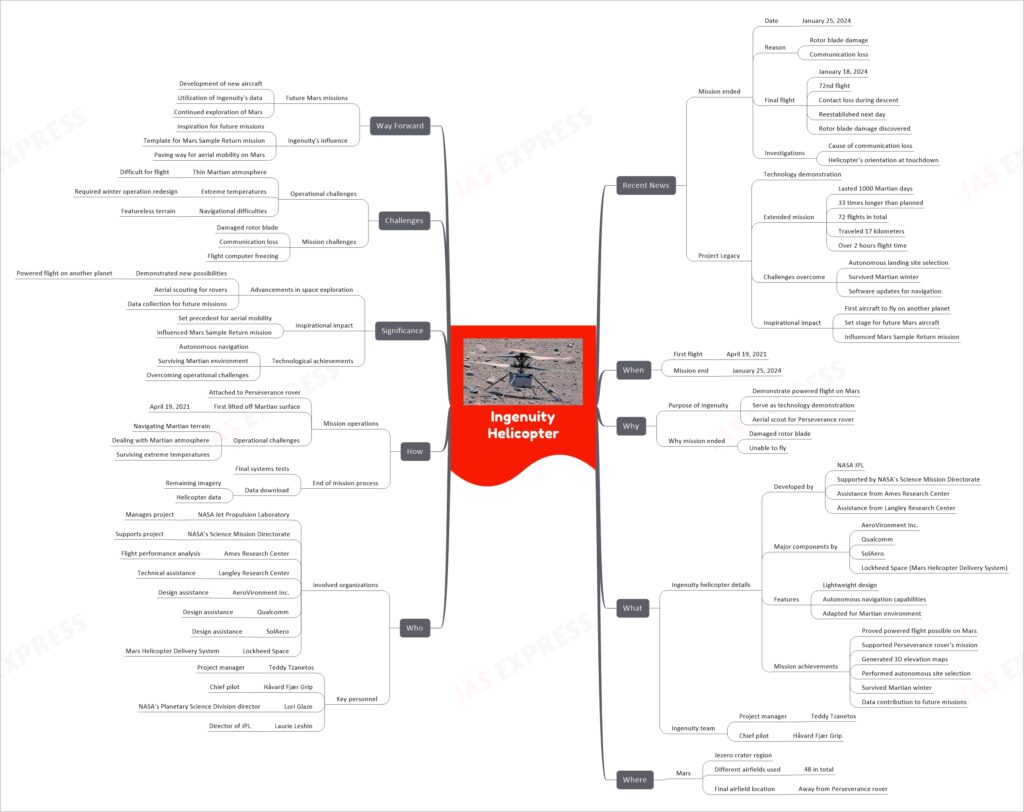
The Ingenuity Mars Helicopter was a groundbreaking project by NASA’s Jet Propulsion Laboratory, aimed at demonstrating powered, controlled flight on another planet. The helicopter was a part of the Mars 2020 mission, arriving on Mars attached to the Perseverance rover on February 18, 2021. Ingenuity made its first successful flight on April 19, 2021, proving that flight is possible on Mars.
Over its extended mission, Ingenuity far exceeded its initial goals, originally planned for only five flights over 30 days. It completed 72 flights, traveling about 17 kilometers and spending more than two hours in the air. The helicopter faced and overcame various challenges, such as navigating the thin Martian atmosphere, surviving extreme temperatures, and performing autonomous landing site selection. Ingenuity’s final flight occurred on January 18, 2024, after which damage to one of its rotor blades was discovered, marking the end of its mission.
The helicopter’s achievements have had a significant impact on future space exploration, demonstrating new possibilities for aerial mobility on other planets and influencing the design of future missions, such as the Mars Sample Return mission. Ingenuity’s success and data will continue to inspire and inform future aircraft designs for Mars exploration.
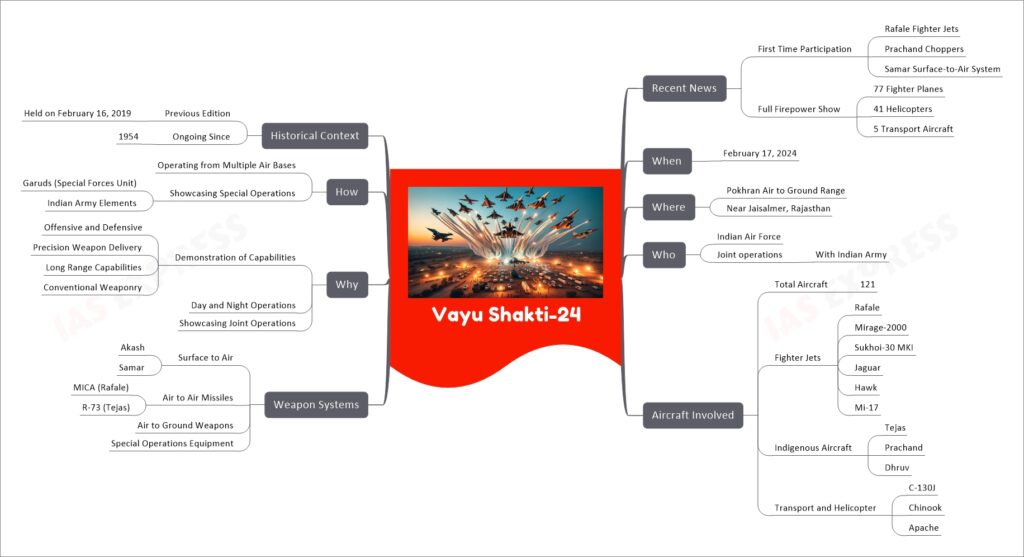
Exercise Vayu Shakti-24, scheduled for February 17, 2024, is a significant demonstration of the Indian Air Force’s (IAF) comprehensive aerial warfare capabilities. Set to take place at the Pokhran Air to Ground Range near Jaisalmer, Rajasthan, this exercise will showcase both offensive and defensive operations of the IAF, including day and night maneuvers. Featuring 121 aircraft, including advanced fighter jets like Rafale, Mirage-2000, Sukhoi-30 MKI, and indigenous aircraft like Tejas and Prachand, the exercise represents a robust display of India’s military prowess in the air. Notably, it will also involve joint operations with the Indian Army, highlighting coordination between different branches of the armed forces. The use of various air-to-air and air-to-ground weapon systems, including the indigenous Akash and Samar, will underline the IAF’s ability to deliver precise and effective strikes. This event, a continuation of a series that began in 1954, is particularly noteworthy for the first-time inclusion of Rafale jets, Prachand choppers, and Samar surface-to-air systems, marking a significant enhancement in India’s aerial combat capabilities.
